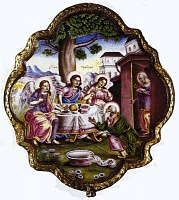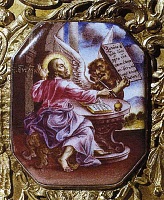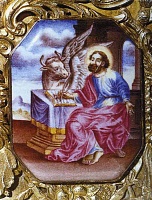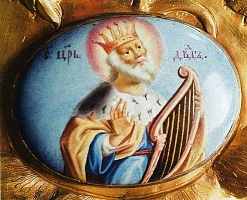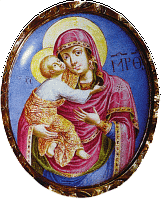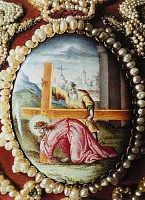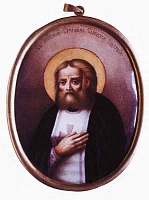The 18th – early 20th Century Trinity Enamel
Enamel means an “alloy” or “shining stone”. So they call painted enamel. In the first half of the 18th century, the Trinity-St. Sergius Monastery reached the peak of its prosperity. Enamel, encouraged by Peter the Great, was mastered by the Trinity craftsmen. Of numerous works of the 18th century Trinity masters there mainly survived enamel plaques that decorated precious works preserved in the Sacristy of the Sergiev Posad Museum-Preserve.
Hieromonk Pavel Kazanovich played an important role in the formation of the unique art school in the Trinity-St. Sergius Monastery. He did not sign his works, but his hand can be traced in the composition “The Trinity of Old Testament”. Under his supervision the Trinity craftsmen went to St. Petersburg to study European painting and copied works of foreign artists. The cover for Gospel of 1757, decorated with enamel plaques, is a specimen of the Trinity enamel.
The mid-18th century enamel painting decorated precious articles produced in the Monastery. Metropolitan Platon (Levshin) in every way supported the work of enamellers. By his order the Monastery art team was formed.
Since the late 18th century the Trinity enamel gradually faded away as to sell purchased goods proved to be more profitable than to produce. The Trinity Monastery began to buy a lot of enamel items from Rostov the Great. Still enamellers went on working. Among the specimens of the 19th century enamel there are icons different from Rostov works. They look like the Lavra lithographs. The enamel icon “St. Seraphim of Sorov” of the early 20th century is an interesting example in this respect.









